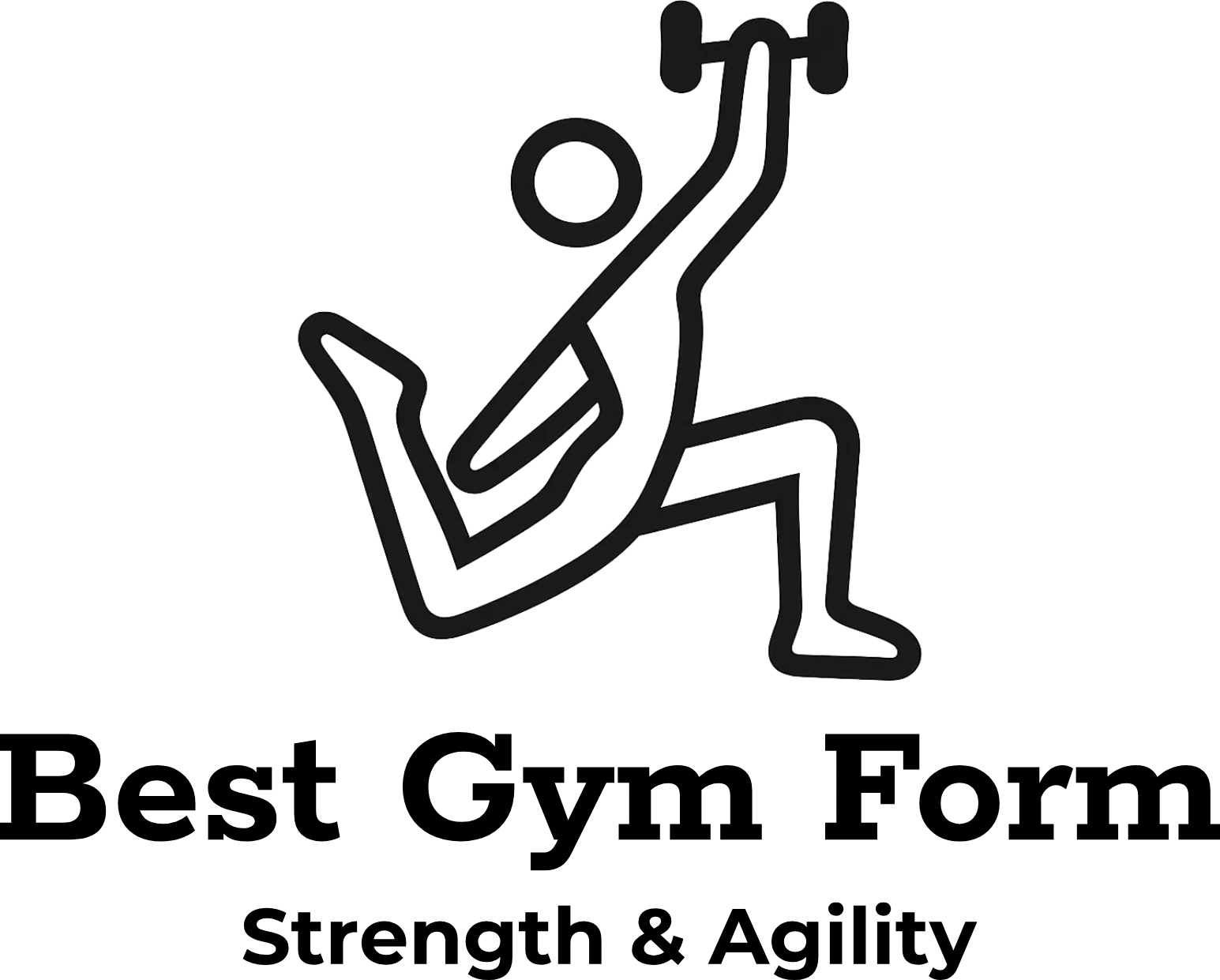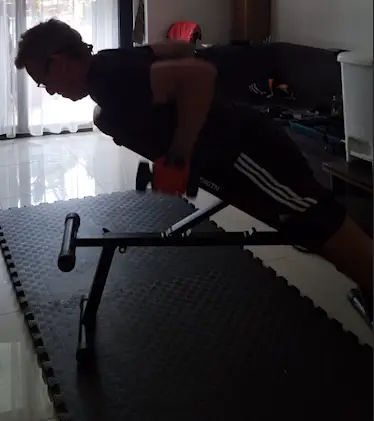All about the Chest Supported Dumbbell Row
(Back)
BENEFITS & MUSCLES WORKED: Mid & Upper Back, Lats, Rhomboids, Traps, Biceps
Watch: my Chest Supported Dumbbell Row video
START POSITION: The start position for the Chest Supported Dumbbell Row is shown in the photo, after picking the dumbbells up from the floor by the sides of your feet – lifting with only your arms without moving your lower back. Note the narrow feet stance, pointing forwards, not a wide stance as is the case for many other Back exercises. Keep your chin up to encourage a neutral spine whilst looking at the floor somewhere out in front of you.
NOTES: Difficulty Rating: 58%
From the start position, let the dumbbells fall in a controlled manner to the outsides of your thighs, until the arms are almost straight. Try not to lock out the elbows.
Keep your lower back still, squeeze your middle back and upper back muscles, and lift until your upper arms are horizontal and parallel with each other. In most cases, it’s safe to lift higher than this point, but that depends on your body type and fitness level.
Other ways to describe this exercise are:
‘Seated Incline Dumbbell Row’
‘Chest Supported Seated Incline Dumbbell Row’
This is a more verbose description, but it’s strictly more accurate.
The chest supported dumbbell row is a variation of the dumbbell row that provides excellent activation of the back muscles. It’s a great way to build a strong back and improve posture. The chest support helps isolate the back muscles, making it a valuable addition to your workout routine. This exercise targets the lats, rhomboids, and traps, and can be modified to suit different fitness levels. Proper form is crucial for avoiding injury and maximising results.

